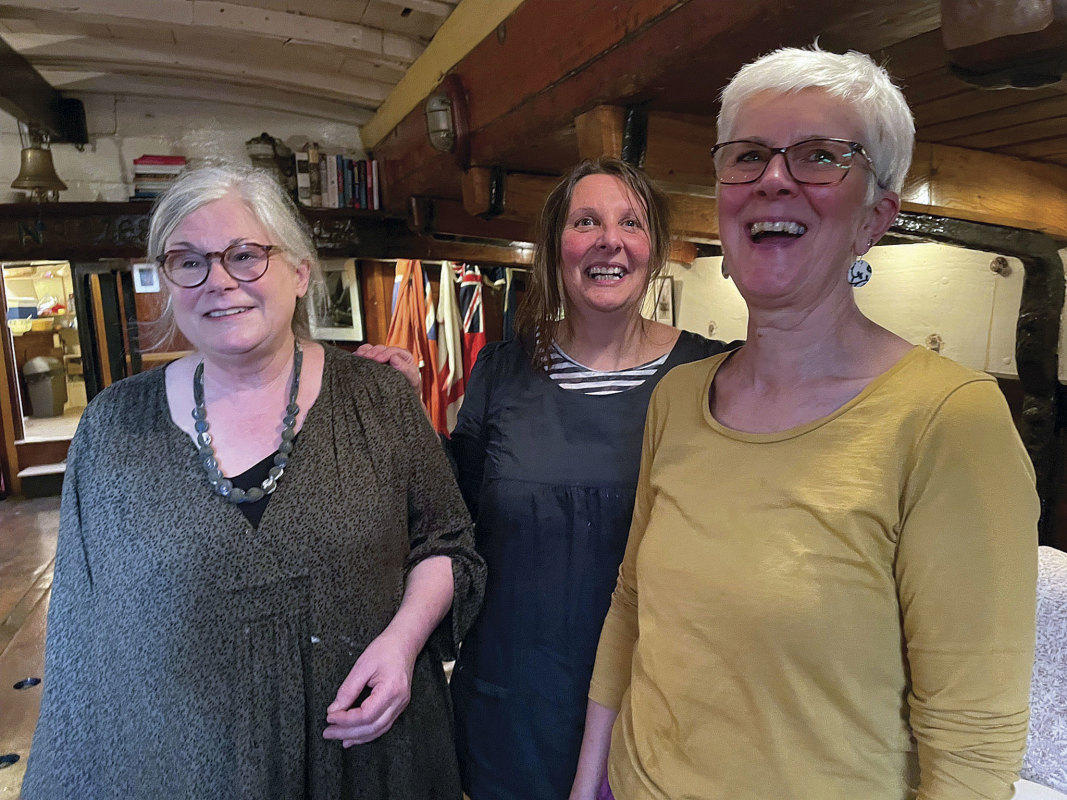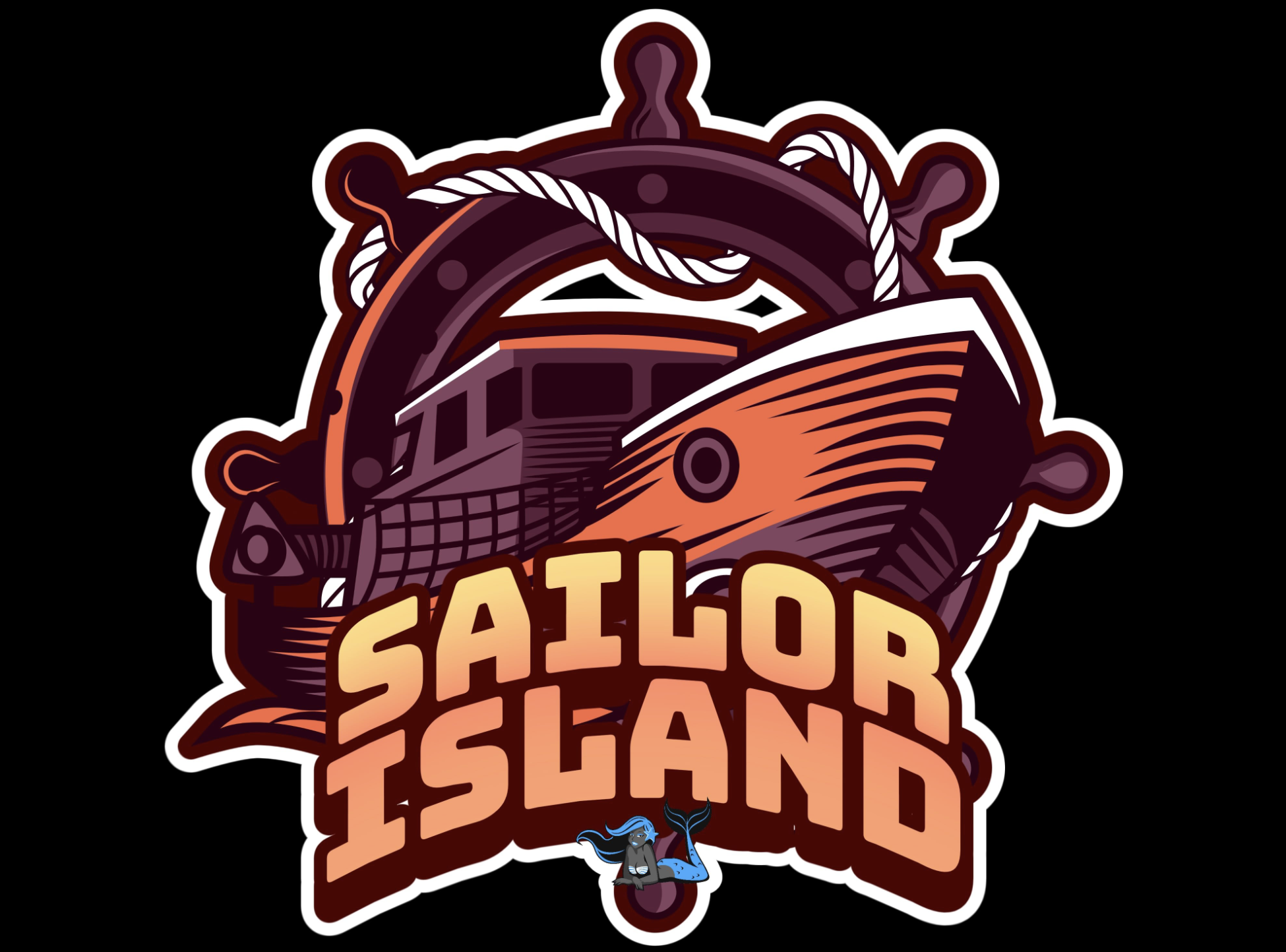
On a chilly February day, muffled chatter and the sounds of swinging hammers fill the St. Osyth Boatyard in Clacton-on-Sea, UK. Halfway down the dock, a 132-year-old piece of historical past sits bobbing beneath the sheen of a transparent plastic tarp. Inside its maintain, ladies are arduous at work.
Wielding crowbars and drills, they pry free worn planks, strip again greasy screws, and expose the bones of this hulking ship—all in preparation for the vessel’s new life as The Bread and Roses Barge, an onboard neighborhood house constructed for girls, by ladies.
The Bread and Roses Barge, a female-led English Group Curiosity Firm (CIC), is devoted to restoring S.B. Might, the oldest surviving Essex Thames crusing barge. Its aim shouldn’t be solely to breathe new life into Might however to remodel her right into a useful resource hub and ultimately a floating bakery that uplifts susceptible ladies throughout East Anglia.

Photograph by Anna Halford
“We wish to give ladies a voice and an area to be supported and nurtured,” says Jane Harman, co-founder of The Bread and Roses Barge.
Many boats of Might’s age qualify as heritage vessels, making them eligible for funding from historic trusts. Typically, with the help of grants, these boats are transformed into coaching ships or remodeled into eating places. However that is the primary time a renovation like this has particularly catered to the wants of present-day ladies—a gaggle that has historically been unwelcome and missed within the male-dominated historical past of English canals.
“This has traditionally been a person’s world, a person’s vessel regardless of the various ladies who’ve been linked to her during the last 132 years,” says Harman. “We goal to handle that.”
The three ladies behind the challenge couldn’t be extra suited to the job. Helen Swift, Jane Harman, and Connie Gadd are not any strangers to boat restorations. Swift and Harman have restored quite a few English crusing barges and have been deeply concerned within the maritime neighborhood for a number of many years. Harman, along with main Might’s restoration, additionally serves as the primary and solely feminine chairperson of England’s Crusing Barge Affiliation. She co-owns and manages the St. Osyth Boatyard along with her husband. And, having spent her youth in Maldon, England, surrounded by fishing smacks, barges, and conventional boats, she has lengthy been conscious of the absence of girls on the water.

Photograph: Paula Palmer/ NHS-UK
That’s precisely why, when The Bread and Roses Mission was first proposed, Harman was instantly : “Too many barges have been misplaced, and those who stay want safety. This challenge is vitally necessary because it includes ladies in what has historically been very a lot a person’s world.”
Connie Gadd, a Bread and Roses co-founder and former proprietor of S.B. Might, was onboard the vessel at any time when attainable. Her husband, Gerald, labored as a skipper for the Tate & Lyle firm, which used Might to move items beneath sail. Gerald’s work ceaselessly took him and Connie on journeys alongside the River Thames and the coastlines of the UK and Europe. Ultimately, when Tate & Lyle had no additional use for Might, the barge got here into the couple’s arms. When Gerald handed away in 2020, the query of what to do with the quickly ageing barge turned paramount. Gadd, Harman, and Swift acknowledged that they would want a large amount of money to revive Might to her former glory.
“The concept got here from Helen. Her expertise with the rebuild of Crusing Barge Daybreak gave her the perception to know that with the intention to safe vital funding, Might wanted a transparent function,” Harman says.
And that function—to assist susceptible ladies onboard Might—shortly gained traction. With backing from a wide range of donations, The Bread and Roses Barge has already begun fulfilling its mission. The group now hosts intimate workshops and teach-ins beneath deck, all tailor-made to the wants of native ladies.

Photograph: Karen&interval;Arty&interval; Isobel&interval; Ralph
From menopause assist classes to profession coaching, splicing workshops, and breast most cancers fundraisers, The Bread and Roses Barge has been fairly busy these previous few years. Might’s design will be partly credited for the repeated success of those occasions. Constructed to move massive portions of cargo by way of shallow estuaries and rivers, English crusing barges sometimes function spacious inside holds and flat-bottomed hulls, offering ample house for folks to assemble comfortably inside.
“Many discover it a secure, cozy, and homely house. Conversations circulate about lives and experiences,” Harman says.
Carrying out the bigger imaginative and prescient for his or her group and the way forward for the Might additionally consists of creating an onboard bakery. Right here once more, Might’s historical past performs a task. Launched in 1891 by J&H Cann, S.B. Might carried grain between Ipswich and London for the following 75 years. The watertight necessity of her cargo—dry grain—helped hold the boat in tip-top form, enabling her to nonetheless be usable some 132 years later.
For The Bread and Roses Barge, the worth of a bakery is twofold: first, as a community-building useful resource for girls who wish to come on board and bake, and second, as a way to financially assist the challenge. The act of constructing bread, Harman notes, is therapeutic and community-oriented.
“It’s an uncommon however very primary technique of communities coming collectively,” Harman says. “Breadmaking, particularly sourdough baking, requires care, love, and nurturing to be at its greatest.”

By Annie Means
These rules additionally function the pillars of Harman’s and her co-founders’ philosophy when partaking with ladies onboard Might.
As a CIC, The Bread and Roses Barge can settle for donations and grants whereas additionally providing providers to additional its mission, on this case baked items. The bakery renovation is one plank within the bigger scaffold of The Bread and Roses Barge’s plan. As Harman factors out, “The aim is to save lots of her; to get her rebuilt so she will be able to sail once more.”
The ultimate goal is to revive S.B. Might’s historic buying and selling route alongside the Thames. Whereas the barge continues to be delivering grain—albeit in a special, baked type—additionally it is delivering maybe a extra necessary message: that the way forward for crusing barges not solely consists of ladies however actively seeks to assist them.

By Annie Means
“We would like a full crew onboard, together with ladies, to sail her often to her visiting ports; six ports over six weeks then again repeatedly for 11 months of the 12 months,” says Harman. “To convey bread to every harbor for folks to gather. To ask teams and organizations that assist susceptible ladies to often come aboard to bake bread, construct friendships, and achieve assist.”
As ageing ships disappear or discover themselves enshrined in museums as relics of the previous, we should contemplate what’s misplaced. In a world the place neighborhood areas dwindle, we should ask ourselves what alternatives we forfeit after we don’t use our pre-existing assets in a extra imaginative means—on this occasion, a historic ship.
By means of the preservation of vessels like Might, we’ve got the chance not solely to safeguard maritime heritage but additionally to nurture and increase communities, notably those who have lengthy been marginalized. This endeavor isn’t just about salvaging relics; it’s about cultivating thriving, inclusive areas that honor the previous whereas forging a brighter future.
By establishing an onboard house for girls, Harman, Gadd, and Swift are main a brand new chapter in maritime historical past—one that’s extra inclusive and caring, one which, very similar to the bread they bake, calls for cautious consideration, respect, and a contact of creativity.

November/December 2024
Trending Merchandise
[product_category category=”trending” per_page=”8″ columns=”2″ orderby=”date” order=”desc”].
